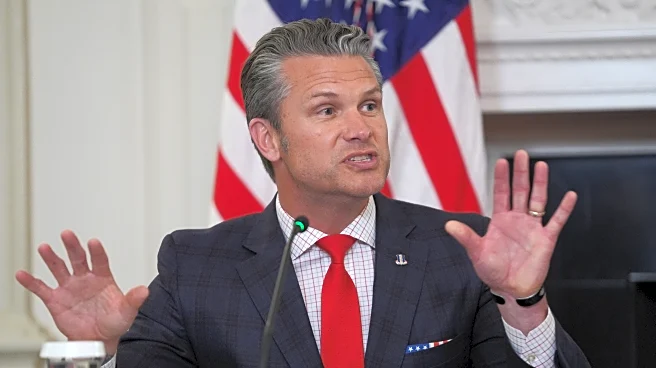What's Happening?
Pakistan's tractor manufacturing industry is facing challenges due to inconsistent government policies, inflation, and high financing rates. The Pakistan Automotive Manufacturers Association (PAMA) highlights that while the industry has seen growth with
new manufacturers like ATS, Buraq, and Guard World, sales remain volatile. This volatility is attributed to frequent changes in tax policies, fluctuating import duties, and unpredictable government interventions. The industry currently has a production capacity of 80,000 units per year, but rising input costs and reduced purchasing power among farmers are squeezing demand. The spokesman for PAMA emphasizes the need for a consistent sales tax regime and a fair subsidy structure to encourage investment in farm machinery.
Why It's Important?
The stability of Pakistan's tractor industry is crucial for the country's agricultural sector, which relies heavily on mechanization for productivity. Inconsistent policies and high costs hinder farmers' ability to invest in tractors, affecting their capacity to cultivate land efficiently. This situation not only impacts local manufacturers but also the broader agricultural economy. A stable policy environment could lead to increased investment, improved production schedules, and enhanced competitiveness in international markets. The industry's ability to export tractors to countries like Afghanistan and African nations highlights its potential, but it faces stiff competition from Indian and Chinese brands.
What's Next?
The industry is advocating for government intervention to stabilize policies, reduce financing rates, and implement a consistent sales tax regime. These measures could encourage long-term investment and planning, benefiting both manufacturers and farmers. The government may need to consider revising the Green Tractor Scheme to ensure broader access and fairness, potentially offering a general subsidy to all eligible farmers. Such steps could enhance the industry's growth prospects and its contribution to the national economy.















